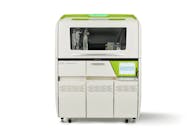Cardiovascular disease (CVD) is a leading cause of premature death worldwide, accounting for approximately 17.7 million deaths per year, representing 31 percent of all deaths worldwide. The underlying pathology is atherosclerosis (arteriosclerosis) which develops and progresses over many years and is usually in the advanced stages by the time the symptoms are expressed.1 Globally, the mortality rate for CVD has dramatically declined over the past 20 years, however, in low- and middle-income regions, the number of lives lost to CVD is increasing. This highlights the growing necessity for the assessment of CVD risk to include methods that account for uncertainty and heterogeneity.2,3
The National Lipid Association
The mission of the National Lipid Association (NLA) is “... to enhance the practice of lipid management in clinical medicine.” NLA advocates advancing the current lipid testing profile. The current lipid panel consists of testing LDL cholesterol, HDL cholesterol, total cholesterol, and triglycerides, which only detects approximately 20 percent of all atherosclerotic cardiovascular disease patients. Advanced lipid testing is recommended to optimize patient treatment.4
Clinical significance of sdLDL-C
LDL cholesterol (LDL-C) is a low-density lipoprotein involved in cholesterol and triglyceride transfer from the liver to peripheral tissues. LDL-C consists of two parts:
1. The bigger part with phenotypic pattern A is light and almost rich in cholesterol (Large Buoyant LDL Cholesterol (LBLDL-C)) and
2. The smaller part with more special weight and phenotypic pattern B (sdLDL-C) composed of less cholesterol.
The two types of LDL-C vary in size through genetic determination and dietary lipid intake. All LDLs transport triglycerides and cholesterol to the tissues but their atherogenesis varies according to size. sdLDL-C is therefore a subtype of LDL-C, and these smaller particles can more readily permeate the inner arterial wall and are more susceptible to oxidation.5
sdLDL-C in clinical practice
Research indicates that individuals with sdLDL-C predominance have a three-fold increased risk of myocardial infarction.6 A sedentary lifestyle, a diet high in saturated fat, insulin resistance, pre- diabetes, and genetic disposition are all contributing factors to elevated sdLDL-C levels.
Measuring sdLDL-C levels enables clinicians to gain a more comprehensive overview of lipid risk factors allowing treatment to be tailored accordingly. In addition, the high prevalence of sdLDL-C levels are commonly observed in individuals with familial hyperlipidemia, non-insulin dependent diabetes mellitus, and central obesity and insulin syndromes.7
Size matters
The diagram below highlights that although the overall LDL cholesterol levels are 140mg/dl in both patients, the patient with coronary artery disease (CAD) has 50mg/dl more sdLDL-C particles that the healthy individual. Therefore, there are more cholesterol particles in the body, increasing the CAD patients’ risk of myocardial infarction.8
Denka Seiken method for sdLDL-C detection
Until recently, the primary methods of assessing a patient’s sdLDL-C levels were based on the laborious and time-consuming ultracentrifugation and electrophoresis methods. The “Denka Seiken” method produces results in as little as ten minutes, facilitating faster patient diagnosis and treatment plan implementation.9
The diagram below indicates that the Denka Seiken method correlates with the gold standard ultracentrifugation method. For this study, 64 samples were used from healthy individuals, CAD patients, and diabetic patients.10
Studies have found that the use of the quantitative Denka Seiken method is more informative in assessment, comparison, and measurement of the effective parameters in obesity.5 This method consists of two main reaction steps which are based on the presence of surfactants and enzymes that selectively react with a certain group of lipoproteins.REFERENCES
- World Health Organization. Prevention of Cardiovascular Disease: Pocket Guidelines for Assessment and Management of Cardiovascular Risk. Geneva: WHO Publications, 2007.
- Cardiovascular Disease. [Online] 2018. [Cited: March 09, 2018.] http://www.who.int/cardiovascular_diseases/en/
- Roth GA, et al. Global and regional patterns in cardiovascular mortality from 1990 to 2013. NCBI. [Online] PubMed, October 27, 2015. [Cited: March 09, 2018.] https://www.ncbi.nlm.nih.gov/pubmed/26503749
- National Lipid Association. National Lipid Association Releases Updated Recommendations on the Use of PCSK9 Inhibitors at the 15th Annual Scientific Session. [Online] [Cited: December 3, 2018.] https://www.lipid.org/nla/national-lipidassociation-releases-updated-recommendations-use-pcsk9-inhibitors-15th-annual
- Najmafshar Aazam, et al. The Correlation between Overweight and Obesity with Plasma Levels of Leptin, Insulin and SdLDL in People Over 20 Years Old. Journal of Obesity & Weight Loss Therapy. [Online] October 26, 2012. [Cited: July 25, 2018.] https://www.omicsonline.org/open-access/the-correlation-between-overweight-and-obesity-with-plasma-levels-of-leptin-insulin-and-sdldl-in-people-over-20-years-old-2165-7904.1000150.php?aid=9249
- Austin MA, et al. Low-density lipoprotein subclass patterns and risk of myocardial infarction. NCBI. [Online] PubMed, October 7, 1988. [Cited: July 2018.] https://www.ncbi.nlm.nih.gov/pubmed/3418853
- National Institute for Health and Care Excellence (NICE). Cardiovascular disease: risk assessment and reduction, including lipid modification. [Online] July 2014. [Cited: March 9, 2018.] https://www.nice.org.uk/guidance/cg181/chapter/1-recommendations
- Mercola J. Why Your LDL Cholesterol Particle Size Determines Your Heart Disease Risk and What To Do About It. GarmaOnHealth. [Online] [Cited: September 4, 2018.] https://www.garmaonhealth.com/ldl-cholesterol-particle-size-determines-your-risk-for-heart-disease/
- Hirano T, et al. Clinical significance of small dense low-density lipoprotein cholesterol levels determined by the simple precipitation method. NCBI. [Online] PubMed, March 24, 2004. [Cited: July 26, 2018.] https://www.ncbi.nlm.nih.gov/pubmed/14726414
- Leary ET. AACC Presentation by Pacific Biomarkers. AACC Scientific Meeting & Clinical Lab Expo. 2016.







